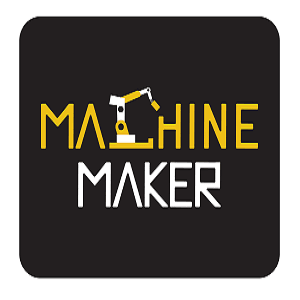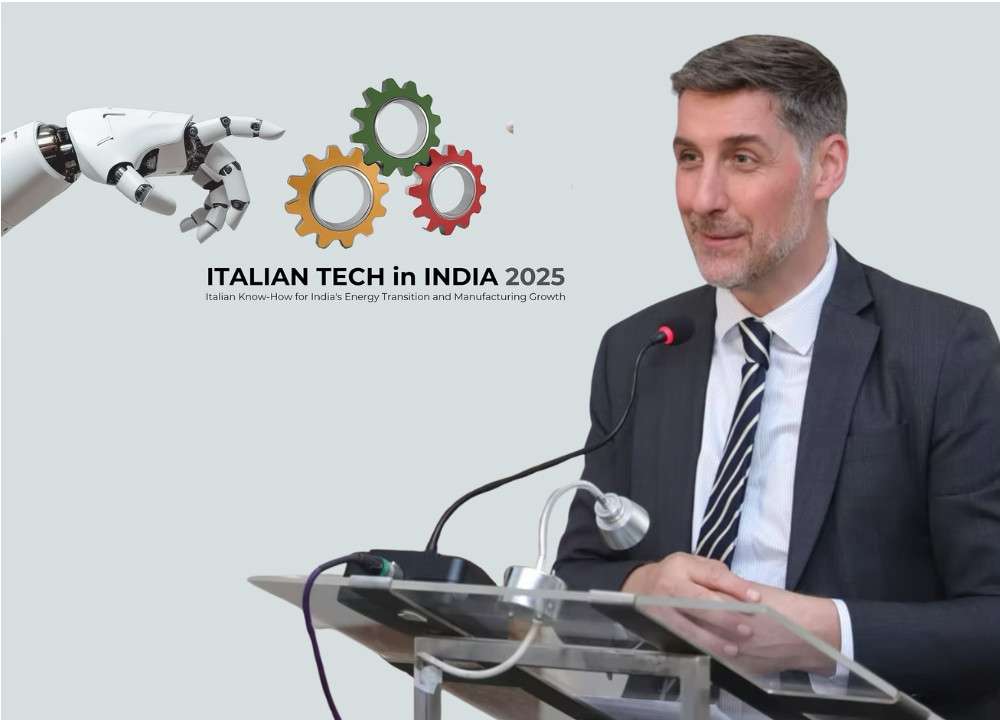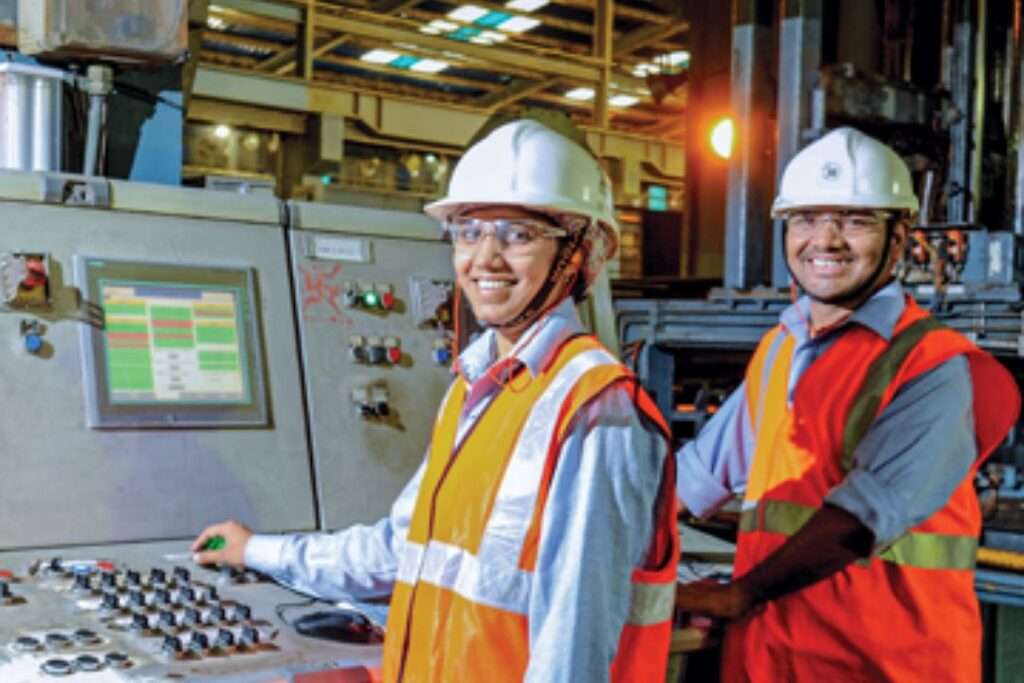- An ideal solution for sanitizing densely populated and narrow areas to minimise contamination risk for sanitation workers.
- An IoT enabled solution, it can provide live streaming to the controller while sanitizing the areas on the spot.
- It is powered by a battery that can be charged with electricity as well as solar energy.
Despite confronting discrimination at various levels in terms of gender, women's contribution and leadership worldwide have been central in discovering solutions to numerous challenges. In respect to that, breaking the chain of taboos such as ‘Women ought to be in the kitchen' and setting up an example for many other women to strive excellence in the field of innovation, Shubhi Sharma, Assistant Professor, University of Petroleum and Energy Studies (UPES) Dehradun along with her student cum co-inventor Neel Adwani, developed a sanitizing apparatus and method for dispensing sanitizer solution device named as ‘SaniRobo’ to assist the nation battle the life-threatening circumstance.
Technology is playing a crucial role in restricting the spread of coronavirus and the employment of robots in reducing human intervention in the contamination prone spots has become a key initiative. Likewise, ‘SaniRobo’ can step in the places where humans cannot, in other terms it is uniquely intended to automatically sanitize small pockets/densely populated areas and can be effectively used in public places such as parks, narrow lanes, hospitals etc where reaching out manually may put the lives of workers at risk of getting infected by the virus. It is concocted keeping in mind the slums of Dharavi, Mumbai.
Speaking to the Machine Maker, Shubhi Sharma stated, “From the time when COVID-19 came into existence I was studying about several problematic areas to work upon that. Suddenly one day I ran over a news where workers were sanitizing the lanes/open areas manually in the slums of Mumbai, which made them more exposed to the risk of contamination and particularly carrying big sanitization machinery in those areas wouldn’t have been possible either. Since I always wanted to do something for society, it was the right time to take an initiative and thus I discussed the entire plan with my student, Neel (B.Tech, CSE) and finally after a long R&D period came up with an automatic sanitization procedure which will save many human lives”.
All you need is a minor's curiosity with a touch of good intention to make a change
Neel Adwani
Student, University of Petroleum and Energy Studies

Mastermind behind the ‘SaniRobo’
The mastermind behind the device, Shubhi Sharma from childhood had an immense inclination towards machine learning which drove her to pursue B.Tech in Information Technology and M.Tech in CSE from IIIT, Jabalpur. As of now, she is working as an Assistant Professor (senior scale) at the Department of Informatics, School of Computer Science at UPES, Dehradun. Her field of intrigue consistently has been machines and Artificial Intelligence, in which she glances forward in accomplishing more research work and even she is pursuing a part-time PhD.
I love my job of teaching and it is more than a job since we work behind shaping other’s future
Shubhi Sharma
Assistant Professor, University of Petroleum and Energy Studies

Method of Operation
‘SaniRobo’ is an IoT (Internet of Things) enabled, user, and environment-friendly device, having an approximate size of 80cm×70cm×80cm which helps in sanitizing narrow lanes, densely populated/small pocket areas and limits the risk of human exposure to the virus. It uses a high-end micro-controller accompanied by a camera that can be controlled by a user from anywhere and its basic principle includes pumping and sprinkling along with an automatic mode which enables the robot to sanitize an entire area on its own. Essentially, the sprinkler attached on its top sprinkles the disinfectant rotating 360 degrees, and the dispenser at the bottom sanitises the area which it traverses.
Apart from this, the camera featured in it helps in monitoring the progress of work and provide live streaming to the controller. The device is equipped with a camera embedded micro-controller unit which is further attached to the pump and sprinkler.
The basic technology used is IoT for control purpose and automation of the robot. One of the key features of the gadget is it can run on battery which can be either charged through electricity or via solar energy (from solar panels attached to it) henceforth, making it an environment-friendly product

Once the battery is fully charged it can continuously work for 2 hours and it possesses a capacity of carrying almost two litres of disinfectants. The controller having authentication details can access it from anywhere without directly heading off to the spot and ultimately when the sanitizer container gets empty the message pops up in the controller’s phone application informing that the sanitizer is finished.
Difficulties and Progress
For almost 2-3 weeks she had been burning candles at both the ends to come up with the device on time with the goal that it can be utilised immediately for emergency purpose and finally filed the patent application for it, which after going through several phases of queries, fortunately, got accepted. Being vocal about the challenges confronted she referenced about passing through a phase of uncertainties that emerged because of the lockdown since it was difficult to procure resources and another impediment was the process of managing voltage distribution and implementing it. Despite numerous hurdles, she didn’t lose hope and with her sheer determination justified that the greater the obstacle, the more glory in overcoming it, by successfully building the sanitizing device to have a common good.
“I have had a lot of moral support from my family and workplace throughout the time. Especially, my dean Dr Manish Prateek encouraged me and has been kind, supportive and an amazing leader”, said Shubhi. Furthermore, she included that the research and development work is done and the prototype is ready, they are currently working in the process of making the final product. “We are looking forward to potential customers to transfer the technology of the device so that it can be mass-produced”, said Shubhi.
Alongside this, she is even working on another healthcare (biomedical) device using Artificial Intelligence and machine learning which will be primarily focussed to support the health care sector. She conveys a message that one should consider this spare time as an opportunity and thus make proper utilisation of time to come up with creative and productive assets. “Embrace the solitude and make the best use of time,” says Shubhi. Her story is a true example of women empowerment which motivates many others to follow their dreams and the path of dedication and hard work to accomplish success one day.
For more details contact Shubhi Sharma: shubhi.sharma@ddn.upes.ac.in








